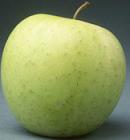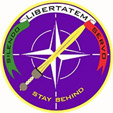Anthropoid
Posts: 3107
Joined: 2/22/2005
From: Secret Underground Lair
Status: offline

|
quote:
ORIGINAL: golden deliciousI could see Paradox coming up with a game like that.
Hmmm. Never heard of them. Will have to check them out.
Okay, lets add Nukes to the list of unbalanced major firepower factors eh? At least for the "Next War 1979" scenario.
I'm playing allies in a PBEM. Through a preemptive first strike, I've managed to wear down the Soviet air force. It is about turn 15 in the game and the Soviets are up agaisnt my defenses in southern Germany in a line between Regensburg to Memmingen. At tile 40,68 which is spotted Super River terrain there are two units:
SSGF 35th Mot Inf, light green health, 30+122 attack, 14 defense, 0 of 18 movement, size XX (division?). Opening up a game playing the Russkies, I see that this unit has 1471 vehicles in it, 425 squads of AT, rifles, and engineers, and a total of about 290 mortars, artillery pieces, and heavy MGs
SSGF SAM SA4, dark green health, 0+0 attack, 1 defense, 0 of 8 movement, size III (regiment?) this unit comprises 27 SPSAM vehicles.
Recall that, in this scenario hexes are 14km. There is one other SAM unit within the 2 hex range for Soviet SAMs in this scenario one at 38,67
I've already played and sent the turn, but just to recreate roughly what happened I've reopened it.
I assign a total of 800 kilotons of nuke attack on it from four different SSM units. That is roughly 40 times more explosive power than Fat Man, the bomb dropped on Hiroshima.
Sum result: 40,68 contaminated, 43% WP casualties, 0% NATO casualties
SSGF 35th Mot Inf, yellow-green health, 20+96 attack, 9 defense, 0 of 18 movement, size XX (division?)
SSGF SSM SA4, yellow-green health, 0+0 attack, 1 defense, 0 of 8 movement, size III (regiment?)
Following this, I pound the tile with plane-borne nukes, a total of 3 Tac F4s, 3 FB Buccanneers, and two FB 104s for a total of 3600 kilotons.
Sum Result: 40,68 contaminated WP 19% casualties, NATO 15% casualties.
SSGF 35th Mot Inf, yellow health, 17+82 attack, 7 defense, 0 of 18 movement, size XX (division?)
SSGF SSM SA4, yellow health, 0+0 attack, 1 defense, 0 of 8 movement, size III (regiment?)
In the actual turn I played, most of the surrounding tiles were also contaminated, but this is roughly what happened when I played it.
So in short, a 14km tile has been hit with a total of 4,400 kilotons of nuke warheads, which has killed about half of a division comprising about 15,000 guys and 1,498 vehicles, including trucks, and other non NBC vehicles as well as Tanks which are not going to be equipped to carry much more than their crews.
4,400 kiloton is 220 times more power than Fat Man which Wikipedia tells me this about
quote:
Because of Nagasaki's hilly terrain, the damage was somewhat less extensive than that in relatively flat Hiroshima. An estimated 40,000 people were killed outright by the bombing at Nagasaki, and about 25,000 were injured
then later in the same page we have:
quote:
According to most estimates, about 70,000 of Nagasaki's 240,000 residents were killed instantly,[6][7] and up to 60,000 were injured. The radius of total destruction was about 1.6 km (1 mile), followed by fires across the northern portion of the city to 3.2 km (2 miles) south of the bomb.[8] The total number of residents killed is believed to be as many as 80,000, including those who died from radiation poisoning in the following months.
For Little Boy we have as follows on Wikipedia
quote:
The official yield estimate of "Little Boy" was about 15 kilotons of TNT equivalent in explosive force, i.e. 6.3 × 1013 joules = 63 TJ (terajoules).[1]. However, the damage and the number of victims were much higher, as Hiroshima was on flat terrain, while the hypocenter of Nagasaki lay in a small valley.
Approximately 70,000 people were killed as a direct result of the blast, and a similar number were injured. A great number more would later die as a result of nuclear fallout and cancer.[2]
At 08:15 (Hiroshima time), the Enola Gay dropped the nuclear bomb called "Little Boy" over the center of Hiroshima. It exploded about 600 meters (2,000 feet) above the city with a blast equivalent to about 13 kilotons of TNT (the U-235 weapon was considered very inefficient, with only 1.38% of its material fissioning),[10] instantly killing an estimated 70,000–80,000 people. . . . . The radius of total destruction was about 1.6 km (1 mile), with resulting fires across 11.4 square km (4.4 square miles).[13] Infrastructure damage was estimated at 90% of Hiroshima's buildings being either damaged or completely destroyed.
So I hit a 14km hex with at least 12 different warheads which are all at least 10 times more powerful than Fat Man (minimum was 200 kilotons for any single unit's attack value). Even assuming some sort of diminishing volume for kilotonage at 200 kilotons, and roughly 1 mile radius of destruction for Fat Man and Little Boy at 20 and 13 kilotons, I would think a 200 kiloton bomb would obliterate at least a 1.5 km radius, i.e., a 3.2km diameter?
12 warheads X 3.2 km = 38.4km diameter area of full blast effects. Assuming perfect cooperation and coordination, and none of the pilots had to drop their payloads off target because of avoiding SSMs (there was zero Soviet air superiority to respond at this point), this means that the ENTIRE hex should have been engulfed in a fireball, and I'm supposed to believe that roughly half of this Soviet division is going to be able to survive this because they have some "NBC-fitted" metal cars to sit tight in!?! It beggars the imagination!
Can anyone who actually knows about this stuff account for whether this is realistic or not?
< Message edited by Anthropoid -- 9/3/2006 5:56:35 PM >
|
 Printable Version
Printable Version










 New Messages
New Messages No New Messages
No New Messages Hot Topic w/ New Messages
Hot Topic w/ New Messages Hot Topic w/o New Messages
Hot Topic w/o New Messages Locked w/ New Messages
Locked w/ New Messages Locked w/o New Messages
Locked w/o New Messages Post New Thread
Post New Thread